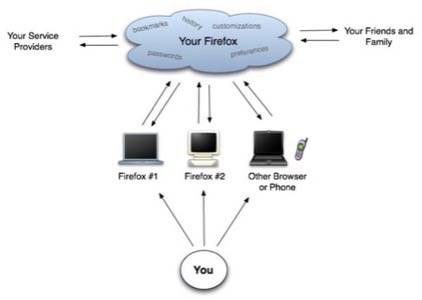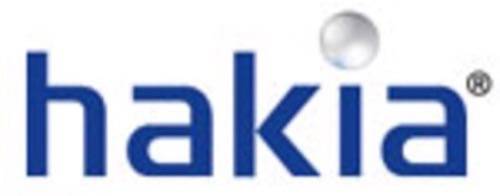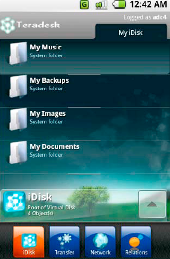In this post we review 10 promising developer platforms for the Web. We’re not talking about the obvious ones either, like Facebook, iPhone, OpenSocial or even Twitter. Those have been covered extensively already. The list below features some of our favorite ‘lesser known’ web developer platforms. There are bound to be other excellent developer platforms not noted below, so as always please use the comments here to point out your own favorites.

We’ve written a lot of times about developer platforms for the Web and we’ve reviewed a fair number of them. A web platform at its simplest is an API, allowing external developers to build on top of your web app or product. As we explained in our post APIs and Developer Platforms: A Discussion on the Pros and Cons, “offering an API is a great way to make developer friends and developing for a large Platform has the potential to bring your work to a huge audience.”
Note: the content in this post has been written collectively by members of the RWW team. Also the list below is in no particular order.
1. Imeem Developer Platform: Music
Major social networking site Imeem launched a developer platform in March that will enable read/write access to user information and more. Imeem is a site where users can upload music, create and listen to any uploads and blog about music all for free. Imeem pays internet radio-style licensing fees for each time a copyrighted song is played.

The new platform is a Flex and ActionScript API that will let developers create customized music players, access activity data and build things like recommendation engines, smart playlists and music games.
2. YouTube Platform: Online Video
The video uploading platform announced by YouTube in March may not have been what many pundits expected but it could mark a major turning point for both YouTube and thousands of other sites around the web.

By allowing website owners to combine an on-site video publishing option for their users with the huge number of people looking to discover new content on YouTube, the platform will create a mutually beneficial feedback loop that will breathe new life into both YouTube and the web at large. It’s also got potential to show up all the other big platform plays we’ve seen to date.
3. Fire Eagle: Yahoo’s Location Platform
Earlier this month Yahoo announced that the closed beta period for its location platform Fire Eagle had ended and that the service was now open for everybody.. Since then, a number of high-profile services, including Brightkite, Movable Type, Dopplr, and Pownce have implemented Fire Eagle through the numerous APIs Yahoo provides for accessing the service.

As we wrote about Fire Eagle when the beta was first announced, it offers API kits in five different programming languages, it’s got user authorization protocols already available for web, desktop and mobile apps and it’s using the open standards community built oAuth to facilitate faster, more secure mashups. This ain’t no cry-baby do it my way or I’m taking my ball and going home framework like the Facebook platform. This is leveraging universal open standards.
Note: also see our coverage of the Yahoo! Internet Location Platform, a collection of in-depth geo-location based APIs.

4. Mozilla Weave: Web Platform for User Data
Mozilla recently announced Weave, a new web platform that will store users’ browser metadata in a cloud environment for access anywhere. Weave is a “framework for services integration” that will, according to Mozilla, “focus on finding ways to enhance the Firefox user experience, increase user control over personal information, and provide new opportunities for developers to build innovative online experiences.”

The basic idea is that browser metadata (things stored in your Firefox profile like bookmarks, history, RSS feeds, usernames and passwords, etc.) is pushed into the cloud and stored on Mozilla’s servers. The data is available to users from wherever they get online and users can share information with friends, family, or third parties while retaining control over how, when, and if the info is shared.

5. Live Mesh: Microsoft’s Multi-device Platform
The new Live Mesh service launched in April as an invite only “technology preview”. It is Microsoft’s attempt to tie all of our data together. Live Mesh synchronizes data across multiple devices (currently just Windows computers, but theoretically it will extend to mobile and other devices in the future) as well as to a web desktop that exists in the cloud. It can sync data across devices used by a single users, as well as create shared spaces for multiple users. On the surface, Mesh is a lot like competing file sync services such as Dropbox, SugarSync (which we covered in January), and even Microsoft’s own FolderShare product. But what sets Live Mesh apart is its platform approach.

Essentially, Live Mesh is a collection of feeds (which can be expressed as ATOM, JSON, FeedSync, RSS, WB-XML, or POX). Every piece of data entered into a user’s Mesh — be it a file, a folder, a message, a user permission, or a new device — is rendered as a piece of information in a feed. The feeds are then synced with other devices that are part of that Mesh following rules for how to sync each particular piece of information (i.e., File A may sync with Users 1, 2, and 3, while File B may only be told to sync with Users 1 and 2).
6. Hakia’s Semantic API
Semantic search engine Hakia announced in June a set of APIs that opens up their natural language processing and search platform to developers. Hakia’s Syndication Web Services really comes in two parts: search queries, which allow developers to add web search functionality leveraging Hakia’s five billion page index, and XML feed calls, which give developers access to Hakia’s underlying natural language processing technology. The latter of the two is clearly the more compelling of the offerings. [disclosure: hakia has been a RWW sponsor]

7. Iceberg: Everyone Can Program
There was a time when only technically-savvy people knew how to create content and publish it to the internet, but the rise of easy-to-use blogging and CMS systems changed that. Today, everyone can be a publisher. Now, Iceberg wants to bring that same democratization to programming. In fact, that’s their vision for Web 3.0 – the web where everyone is a programmer.

Build an App in 3 Minutes
In June Iceberg launched publicly. Although the focus is on business applications, like CRM or PM tools, you can interface with anything that offers up a web service. For enterprise environments, instead of using Iceberg as a service, I.T. departments can download and use Iceberg offline, behind the firewall, to work with their in-house servers, like Windows SQL server for example.
8. Cascada Mobile: Anyone Can Build a Mobile App
In July Cascada Mobile launched a platform called Cascada Breeze, allowing anyone to take their idea from thought to app in about fifteen minutes. Well, maybe not anyone – the apps are built using HTML, so you would have to have some rudimentary web programming knowledge to use their platform. Still, you have to admit, that’s a lot easier than using a professional development platform.

With Breeze, you can build, test, and distribute mobile J2ME apps that run on hundreds and handsets. And these are “real” apps, too – fully integrated mobile applications with their own icon, not just mobile widgets.
9. Android: Google’s Open Mobile Phone Platform
We said we wouldn’t discuss iPhone, but we can’t help mentioning Android – because of its potential to really open up the up-till-now closed mobile phone platform ecosystem. Earlier this week we reported that the HTC Dream, the first handset to run Android (aka “the Google Phone”) has been approved by the FCC. In the documents provided, it appears that we have now a release date for this highly anticipated phone: November 10th, 2008.

Google has been encouraging developers to create applications for Android and rewarding them for doing so with cold, hard cash with the Android Developer Challenge. (See our previous coverage here). This has led to numerous third-party applications ready to flood the market when the phone goes to launch, regardless as to which developers win the big prizes (Pictured: Teradesk App). According to PCWorld, Google Developer Advocate Jason Chen told the Android breakout session at May’s Google I/O event that developers won’t need to get Android applications certified by anyone nor will there be any hidden APIs accessible only to handset makers or mobile operators. Even the phone’s homescreen and widgets will be customizable – that’s a much different take than the locked-down iPhone – and one that caters to users who like to make their phones their own.

10. Meebo: Web Instant Messaging
Unlike most other platforms in the news these days, the Meebo Platform is a closed one. As at December more than 300 companies had registered to build applications but only 39 had been accepted into the program. Most are multiperson gaming apps, the rest video and voice chat apps. Companies chosen to participate in the Platform work closely with Meebo to assure high-quality integration of their applications, the company says.

The Meebo Platform is the third step in the vision for the company, after building a basic web IM service and then integrating that service into other sites through tools like MeeboMe and MeeboRooms.
We hope you enjoyed this overview of 10 promising web developer platforms. For more about the theory and practice of platforms, check out Marshall Kirkpatrick’s post So You’re Launching a Platform: After Ubiquitous APIs – What’s the Next Frontier?. A good companion piece is Picking a Platform: 5 Issues to Consider. Also read Alex Iskold’s classic March ’07 analysis When Web Sites Become Web Services.
Top image via ottonassar










